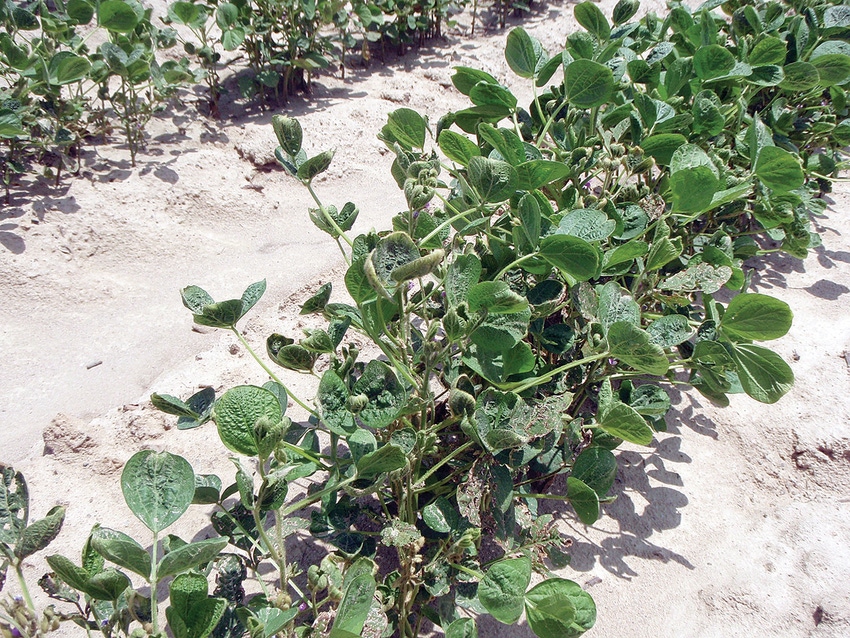August 3, 2017

I have been writing on the testimony I was asked to provide at a recent Arkansas Joint Agriculture, Forestry and Economic Development Committee meeting on dicamba. I have covered the need for new technologies and the need for these to co-exist with current technologies. I have also provided some basic background information on dicamba as a herbicide.
In the next couple of articles I will focus on what happened in 2017 and why. There are lots of articles, blogs, tweets and interviews out on the internet and social media offering a variety of opinions on why there are so many off-target issues with dicamba.
When the dicamba symptoms on non-dicamba tolerant soybeans first began to appear in early June and the calls started coming in, most fields I looked at had an obvious drift pattern in them. Drift will normally appear first as it will have the highest concentration of herbicide — especially close to the source. Drift patterns are normally pretty easy as there will be a gradient in the level of symptoms across the field; pattern lines where the degree of symptoms will be much greater on one side than the other; protected areas behind tree lines and such.
In the first few fields I looked at, it would have been very easy to have located the source of the drift. I saw a few situations where I felt there were obvious label violations and even blatant disregard for the neighbor. However, I believe in most cases applicators made every effort to follow the labels and do things right. I even had farmers say they watched their neighbors spraying and felt they were doing good jobs and the farmers had no concerns that their neighbors would damage their fields.
In media interviews almost every single applicator has been thrown under the bus by industry representatives for not following labels, using illegal formulations, not properly cleaning their sprayers and not being properly trained and competent. These are the same applicators that have been spraying every other herbicide through the years without any history of landscape damage.
What is happening in the field right now is what sets auxin herbicides apart from all others — they can be more difficult to keep on target by nature and certain plants are simply far more sensitive to them than to other types of herbicides. That is the reason the dicamba labels are written so restrictive. They are virtually impossible to follow to the “t” and this will only get worse as states add things like “hours you can spray” restrictions.
I also looked at fields early in the season where I felt there were volatility patterns. There were stories like “I was sitting in the road in a vehicle when my neighbor sprayed and the wind was blowing dead away from my field — now look.” These had similarities to drift patterns, but tended to be more random with more severe damage in low areas of the fields. Again, though, there were patterns and gradients.
The drift and volatility patterns discussed here tended to describe the onset of symptoms and what happened in what I would call the lower-use areas of Arkansas. They do not describe what ultimately happened in the high-use areas.
About the Author(s)
You May Also Like




